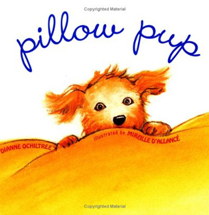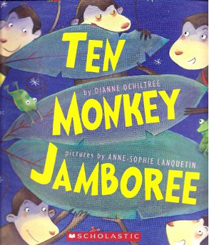TOP 10 TIPS FOR PICTURE BOOK SUCCESS

From Dianne Ochiltree, author of books for the very young
- 1. WRITE WITH RICH LANGUAGE. Use strong, specific verbs and nouns. Choose active, NOT passive, verbs. Write with all five senses: taste, touch, sight, sound and scent. And, ker-plung, ker plunk…kids love onomatopoeia!
- 2. MAKE EVERY WORD COUNT. Short, simple, but lively sentences are best for either prose or rhyming stories. Rearrange word order to maximize read-aloud potential. Read your manuscript out loud, early and often.
- MAKE SURE YOU HAVE A COMPLETE STORY. Picture books need the same basic elements as a novel: a likeable main character, a well-constructed setting, interesting minor character(s), a compelling problem for the main character to resolve, a specific point of view (i.e., a young child’s), distinctive writing style…and theme/take-away message geared to target readership. Does your story have a beginning, middle and end?
- PLUG IN PICTURE POTENTIAL. Do your words prompt mental pictures that an artist can use for a creative springboard? Does your story unfold in a series of ‘changing scenes’?
- PICK UP THE PACE. Even a quiet manuscript needs to move the plot forward at a quick pace. Eliminate unnecessary description. If you can take story elements out of text, and into illustrator notes, do it!
- STREAMLINE THE STORY. In today’s picture book market, shorter is better. Don’t clutter your manuscript with unnecessary subplots, or characters. Do a rough dummy or storyboard to make sure your story will fit into 32 pages.
- DROP A HOOK IN YOUR BOOK. The more ‘extras’ you can build into your picture book story, the better…as long the hooks are a natural fit for your plot, character and setting. Curriculum tie-ins, pop culture trends, child development needs, etc., can boost the market potential of your book, and make your work stand out when it hits the editor’s desk. There will always be a need for counting books!
- WATCH YOUR WORD COUNT. Know what the current page/word count specifications are for the age you’re trying to reach…and stay inside those boundaries. For example, a picture book for an older reader (6-8) might be up to 1,000 words; but one for a very young reader (0-2) could be as little 100 words. Typing out the pages of a few, newly-published books for your target age level will help you get an idea of appropriate word count for your WIP.
- SHOW, DON’T TELL. Use only ‘telling’ details in your characterization. The illustrator will flesh out your story’s world guided by these few, essential clues so there’s no need to describe the color of your MC’s hair or eye color. Your character’s actions and reactions can describe personality quirks, emotions, and motives very effectively. Don’t forget the value of dialogue and body language in characterization.
- YOU GOTTA HAVE HEART. This is the warm, fuzzy feeling you’ve wrapped around your story…but it’s a fuzzy thing to define. Start with visualizing your target reader: how does the world look to a child this age, literally and emotionally? Make sure your story is told from that kid-friendly viewpoint. Don’t get too nostalgic or sentimental, because kids are too young to have a frame of reference for either…they live in the moment! They love to laugh, too. Lighten up quiet, serious scenes with a little humor.
BONUS TIP: THE PITCH. If you were in the lunch line at a writer’s conference and had only sixty seconds to pitch your story to an editor or agent…could you? The final manuscript revision test is putting together a 1-3 sentence pitch that hits the high points of your story’s action, message, and marketing hooks in a way that prompts an invitation to submit it post-conference.
For more writing tips, check out www.ochiltreebooks.com
More about Dianne: She is the author of nine books for children. Here are two you may recognize. Thanks Dianne for sharing your expertise. Kathy


Dianne gives a great lecture. Thanks for the post!
anita
LikeLike
By: anitanolan on July 28, 2009
at 5:05 pm
Thanks for the nice writing pointers. I’m going to link to it on my blog, PictureBookParty.com on a future post. Thanks!
LikeLike
By: Andrea Zimmerman on September 25, 2009
at 7:25 pm
Andrea,
Thanks for visiting. I enjoyed visiting your sites’ and seeing the books you have written. Perhaps you have some tips to share.
Kathy
LikeLike
By: kathytemean on September 25, 2009
at 9:50 pm
I appreciated this information. I am at the beginning of illustrating and writing my first children’s book, and really enjoying myself!
I am ready to take my pencil sketches to paintings and need advice on what size I should make the painting, should it be on canvas paper?
I don’t know the steps that happen from the origianal illustration to the printing of the picture.
Can you advise me? Thank you. Peggy
LikeLike
By: Peggy Gornik on November 5, 2009
at 12:02 pm
Peggy,
The paper all depends on what medium you want to use. It sounds like you want to make a book dummy. Did you see my post from a few weeks ago about laying out a book dummy? Are your sketches laid out that way? Usually a book dummy is the size of a picture book that you find in a store. You don’t have to paint all of them to give an editor/art director an idea of your vision. Have you gotten any feedback from a writers group about the story? Are you a illustrator? I only ask, because if you aren’t you do not have to worry about doing the illustrations. If you are an artist, then you want to make sure you get your text exactly right, before doing the artwork. I have been doing the artwork for a picture book book for a few years and I’m still not finished, because I keep changing my text and changing the art. So the best thing you could do it get the story the best it can be asnd then lay it out according to what was in my previous post. Pay attention to whether you need all your words. Once you lay it out, you probably will see words that can be told with the pictures. Pay attention to the gutters, so nothing important ends up in them. Sounds like it would be a good idea to sign up for an SCBWI workshop or conference where you can get professional feedback and make some good connections.
Good luck,
Kathy
LikeLike
By: kathytemean on November 5, 2009
at 1:14 pm
[…] TOP 10 TIPS FOR PICTURE BOOK SUCCESS […]
LikeLike
By: Top Twelve 2009 Posts « Writing and Illustrating on December 30, 2009
at 12:16 am